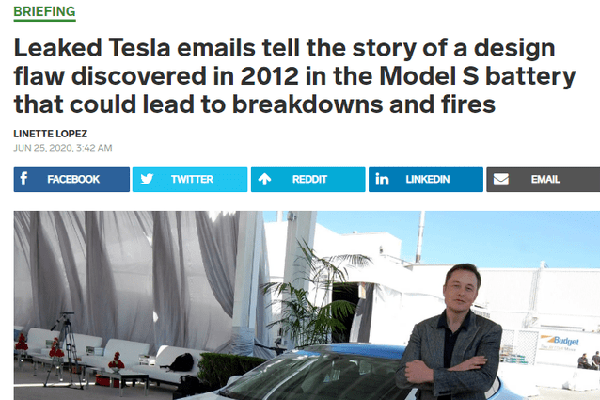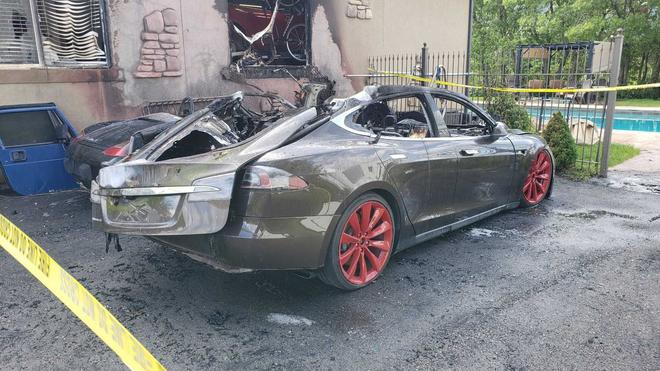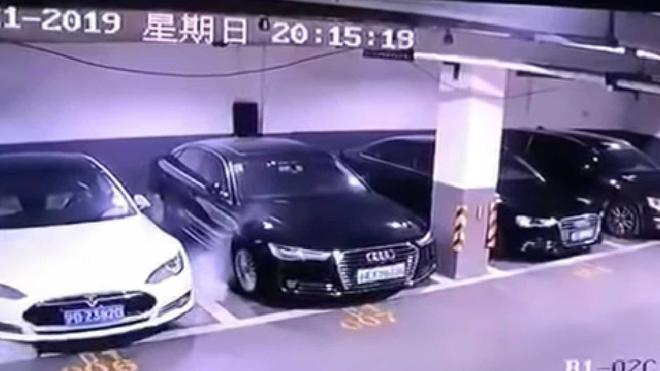In addition to Weibo, there is also WeChat
Please pay attention

WeChat public account
AutoBeta


2024-11-17 Update From: AutoBeta autobeta NAV: AutoBeta > News >
Share
AutoBeta(AutoBeta.net)06/29 Report--
The first model of Tesla's first model, the Model S, was launched in 2012, but there have been frequent incidents of spontaneous combustion in the years after its launch, for reasons that have not yet been announced. Recently, foreign media reported that the cause of Tesla Model S spontaneous combustion has been found.
According to the latest Linette Lopez column of the US news media Business Insider, Tesla's first model, the Model S, has been defective from its design, which leads to vehicle spontaneous combustion.

According to Lopez, when Tesla shipped the first batch of Model S in 2012, Tesla already knew that the design of his battery cooling system was defective, which could easily cause coolant to leak into the car's battery pack, resulting in the possibility of spontaneous combustion of the vehicle. Although Tesla was already looking for a solution before he started production of model S in 2012, Tesla still did not completely solve the problem and delivered the defective vehicle in order to deliver the vehicle in time.
It is understood that Lopez checked a number of Tesla's internal emails and two analysis reports ordered by Tesla due to problems with the Model S cooling system, and communicated with three people familiar with the issue.
At the same time, the report mentioned leaked emails that Tesla commissioned three companies (IMR Lab, Ricardo Consulting and Exponent) to test and investigate the battery cooling system, while the three companies gave relevant test reports to Tesla in July and August 2012, respectively. The three results showed that there was something wrong with the end connection accessories.

Lopez also said that Tesla Model S battery depends on the cooling coil to adjust the temperature, but the end joint of the cooling coil is made of aluminum, which is prone to cracks and pinholes. Another situation is that the parts of the end fittings of the cooling system are brazed together, but because there are still gaps, employees need to use tools to narrow the distance. As a result, it may cause the car battery to short-circuit or leave flammable residue inside the battery.
Although the battery coolant itself is not flammable, its residue may burn once it evaporates, according to an industry insider. It is worth noting that the conclusions drawn from all this are only Lopez's speculation and cannot provide evidence or the pictures in the report to prove it. In this regard, Tesla has not made too much recovery.
It has to be said that there were several MODEL S spontaneous combustion incidents occurred by Tesla in just three months in 2019. Model S spontaneously ignited in the underground parking lot of a certain residential district in Guangzhou, China, on April 21, a Tesla Model S in Shanghai, Model S in San Francisco, and Tesla in a parking lot in Hong Kong on May 12. Even in the previous time, there were also spontaneous combustion incidents.

If the same problem occurs repeatedly, then whether the vehicle has a design problem of spontaneous combustion will become a guess. However, even in the face of the emergence of all kinds of "negative" news, Tesla officially gave an explanation with a tough attitude, perhaps because he has a lot of strength for the current market, but if Tesla has always chosen to ignore the issue of safety and integrity, then it will undoubtedly be abandoned by more and more consumers.
Welcome to subscribe to the WeChat public account "Automotive Industry Focus" to get the first-hand insider information on the automotive industry and talk about things in the automotive circle. Welcome to break the news! WeChat ID autoWechat
Views: 0
*The comments in the above article only represent the author's personal views and do not represent the views and positions of this website. If you have more insights, please feel free to contribute and share.











© 2024 AutoBeta.Net Tiger Media Company. All rights reserved.